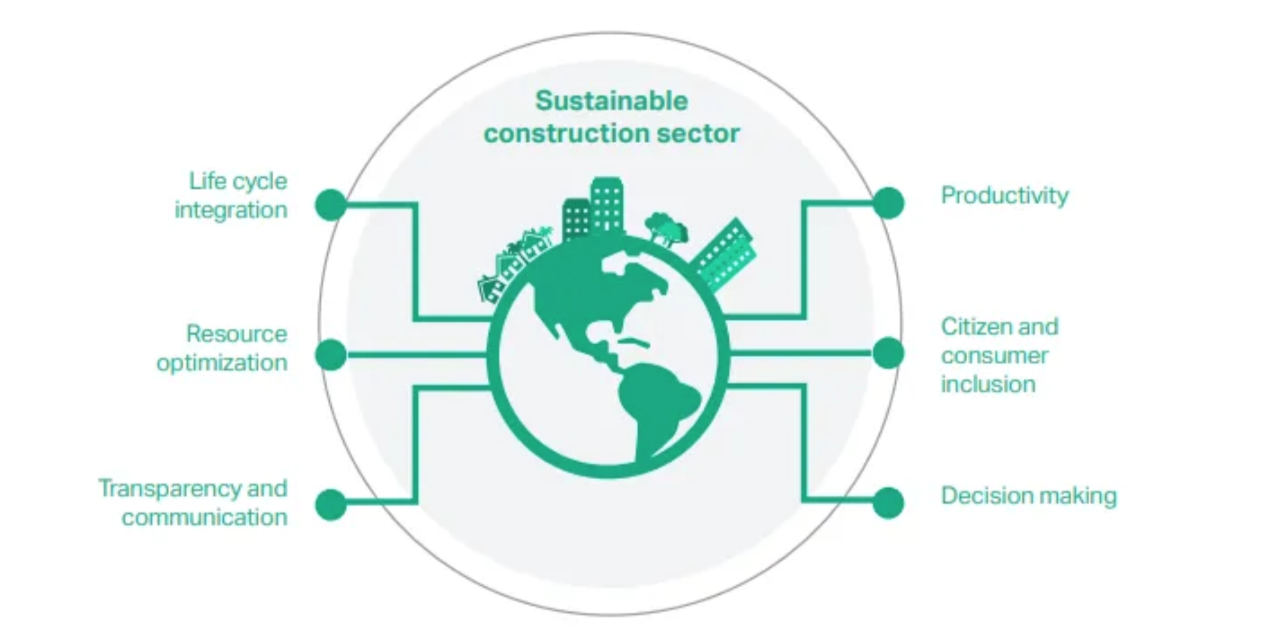Construction product data: The digital transformation

Connecting the dots in the built environment — A data-driven utopia
Construction product manufacturers produce a significant part of the information required to achieve a safer construction industry, but currently, this information isn’t organised, structured or shared in an easy-to-understand or consistent way.
In this article, we outline why the digitisation of construction product data is key for manufacturers, but also the future of the industry. We explore the benefits of digitising, connecting, and structuring analogue, scarce and disconnected sources of information, to transform business operations and enhance sustainability in the sector.
Different types of construction product data
- Manufacturing data: Any information relating to the manufacturing process for a certain product, including breakdown of different materials, the manufacturing plant and the processes used.
- Technical specification data: This refers to the traditional information included within architectural and technical specifications. It includes dimensional, performance and maintenance data.
- Sustainability data: Any data linked to social or environmental sustainability, both at a company-level (including ESG criteria), but also at product level (e.g. environmental impact, circularity, material health, supply chain information, etc).
- Cost data: Information about unit costs and procurement.
- Identification data: This refers to data that helps identify specific products or components, such as Material Passports or GUID (globally unique identifier) barcodes.
- Logistics data: Information about lead times, handling, transportation, storage, packaging, supply and delivery of products.
 Disclaimer — Please get in touch if you feel we should be including additional types of product data within the above list.
Disclaimer — Please get in touch if you feel we should be including additional types of product data within the above list.
Why should the data be structured?
By data, we usually refer to raw and unstructured information. Construction product and sustainability data usually lies in unconnected locations, such as product catalogues, databases, certificates, spreadsheets, manufacturing records, hard copies, box files and so on.
When left unstructured, it is costly and time-consuming for humans to interpret, and essentially incomprehensible by machines. However, if the sources are interlinked and secure, and the data refined and verified, it can be a game-changer. It automatically makes the manufacturers transparent, and provides a single source of truth on product performance. The key is to define the data in a standardised manner, and in an interoperable format that can be translatable and exchangeable between various users and different software.
A construction product with digitised data immediately becomes understandable, identifiable, searchable, and more importantly, machine readable, introducing performance analysis concepts and sustainability considerations that haven’t existed before.
What benefits can a structured digital data approach bring to manufacturers?
In short, it brings commercial benefits, ensures regulatory compliance and at the same time, secures a sustainable future for our planet — A no-brainer, isn’t it?
Through a structured data approach, manufacturers can carry out targeted marketing and focus on the most profitable features, projects and regions. They can gain market share over competitors, optimise new product release timeframes, improve sales cycles and conversion rates and boost productivity. As well as the operational benefits, they can reduce marketing and sales costs by sharing their data with third party digital data pools or platforms, leveraging technology to gain exposure to new clients and channels; particularly those focused on sustainability.
A data-driven approach can help manufacturers consider value from a different angle, enabling them to focus on the environmental impacts and circularity of their products.
Product data and standards compliance
Standards define the best practice, and outline the common technical requirements aligned with regulatory compliance. They are essential for effective data management, both between stakeholders and countries.
BS EN ISO 23386:2020, BS EN ISO 23387:2020 & ISO 12006–3 are some of the relevant product data standards. Their role is to:
- Set the minimum common specifications, procedures and methods to be used in construction, providing a governance structure for compliance.
- Ensure interoperability at an international level, allowing for uniform data applicability between different regions.
- Ensure the consistency and comparability of products across the industry and wider supply chain.
- Promote transparency and traceability on construction products.
Standards are quite complicated, but play a pivotal role in the digital transformation of the sector. They provide a structured system that allows the establishment of an exchangeable data dictionary for construction products, while securing manufacturer compliance.
Mythbuster: Supplying product data to third party platforms is expensive
Construction product manufacturers are undoubtedly, but also understandably, very cautious when it comes to spending capital on technology or digitisation.
The main reason for this perception is misinformation about the process, along with previous failed investments on other marketing initiatives, such as on BIM objects. As demonstrated in the 2018 UK BIM Alliance report on construction product data, investments on BIM objects have been used as an aggressive marketing tool by many manufacturers over the last decade, without delivering any tangible financial outcome or clear commercial benefit. As explained by the IET, the main reason for this failure is the data format, which is inconsistent, unstructured and incomparable, often with outdated information. This makes it impossible to sustain an on-going cost effective maintenance and update regime.
If you think about it, manufacturers spend thousands every year on updating and maintaining their own website, but also on securing their presence on external marketing platforms. When combined with internal marketing resources and outsourcing, it can lead to huge costs.
By structuring product data, it automatically enables manufacturers to leverage technology via APIs and supply information to any platform with permitted access, at basically no maintenance or admin costs. The only real cost lies on initially structuring the core database, and then uploading new data whenever available. However, the structuring exercise just needs to happen once, and on a single location. That can be either on the manufacturers’ internal database, or a third party platform.
Manufacturers already hold most of the necessary data for their products, they just need to compile it in a comparable, transparent and interoperable format. Once the structuring is complete, the data management process is quite simple. It instantly becomes secure, precise and effortless.
Utilising technology to provide secure and structured product data to third party platforms is a good commercial decision. It helps manufacturers strategise and enhance profitability by setting priorities via data-driven analysis, while reducing errors, waste and costs.
How can product data digitisation help address the climate emergency?
The digitisation of construction product data has the potential to fundamentally transform the sustainability performance and overall environmental impact of the construction industry. In essence, it enables:
- The management and interpretation of complex information, enhancing decision-making on sustainability targets, such as transportation details, water and carbon footprint, materiality breakdowns and regulatory or standards compliance.
- Higher transparency and accountability through interoperable data, both on intra and inter-organisational levels. This ensures continuous operations monitoring for performance evaluation and improvement.
- More competition between manufacturers by promoting information consistency and more thorough comparison and benchmarking tools, pushing for refinement on manufacturing processes and the end-product product quality and impact.
- The traceability of construction products, promoting circularity in the construction sector.
- The connection to life-cycle information, allowing stakeholders to understand resource flows during all life-cycle stages, leading to resource-use optimisation.
Sustainable considerations are no longer just a ‘nice to have’ or the ambition of single clients on the odd project, they are demanded by society. They are key prerequisites to ensure compliance and business continuity, and the digital transformation is a paramount factor in this transition.

About 2050 Materials
2050 Materials is a team of sustainability experts, architects and construction professionals. We’re building a platform to help designers navigate the complexity of climate issues in the construction sector.
If you would like to stay updated on our progress and get notified when we launch, register on our website, or follow us on LinkedIn.
Stephanos , Co-Founder
2050 Materials, democratising sustainability
Related articles

Climate-Resilient Materials for the Built Environment: A Data-Centred Prime
As climate volatility intensifies, resilience metrics are fast becoming as critical as carbon data in material selection. This article outlines why adaptation is now a design imperative, how materials can be evaluated through a systems lens, and what KPIs project teams should demand. From self-healing concrete to fire-rated façades, we present a structured taxonomy of resilient materials, explain how to embed this intelligence into digital design workflows, and propose next steps for specification, benchmarking, and procurement.
Read more
The Most Interesting Low Carbon Products in Office Design
In this article and collection, we highlight 11 outstanding products that contribute to a lower carbon footprint in office design.
Read more
Top Low Carbon Building Boards: Performance, Benefits, and Use Cases
The building boards highlighted in this article and collection showcase low-carbon innovation in modern construction.
Read more